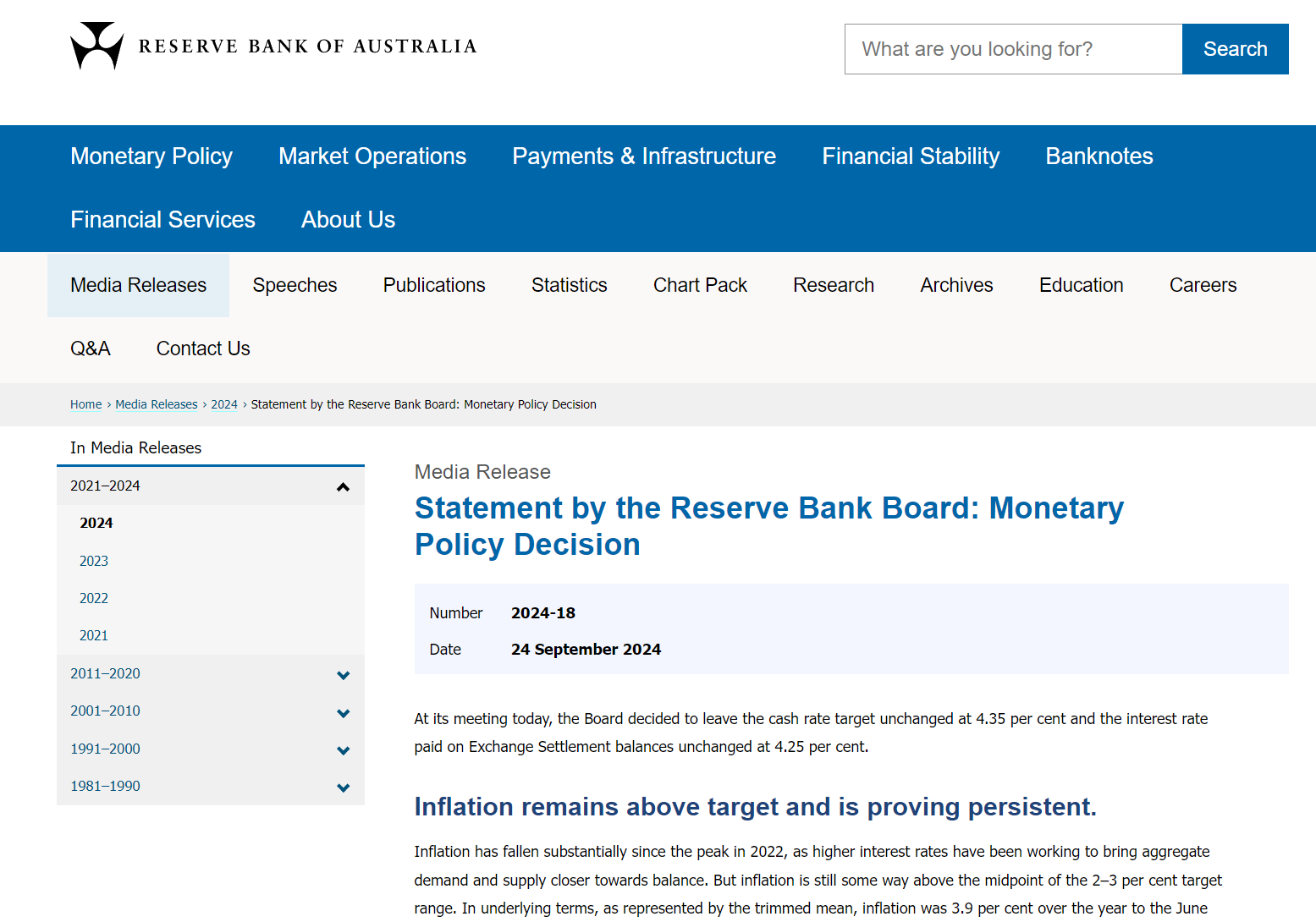澳洲联储如预期般按兵不动 市场下调12月降息预期
周二,澳洲联储(RBA)继续将现金利率目标维持在4.35%不变,符合市场预期。
周二,澳洲联储(RBA)继续将现金利率目标维持在4.35%不变,符合市场预期。值得注意的是,这是该央行连续第六次将利率维持在4.35%。

当前,全球多个央行已经跟随美联储开启降息周期,澳洲联储是罕见的仍维持鹰派立场的央行。
在发表的声明中,澳洲联储强调通胀仍然高于目标且具有持续性。“我们目前的预测认为通胀要到 2026 年才能持续回到目标水平。以年终值计算,基本通胀率已连续11个季度高于目标中点,过去一年几乎没有下降。”
声明中提到,在合理的时间内持续让通胀回到目标水平仍然是董事会的首要任务。因为“这符合澳大利亚央行实现价格稳定和充分就业的使命。迄今为止,长期通胀预期与通胀目标保持一致,保持这一状态非常重要。”
澳洲联储表示,虽然总体通胀率将在一段时间内下降,但潜在通胀率更能反映通胀势头,且目前来看仍然过高。并强调,“在董事会确信通胀率正在持续向目标区间移动之前,政策需要足够严格。”
澳洲联储传递出来的信息很明确,即市场仍然不会在短期内看到央行降息。
这一强硬立场推动澳元兑美元汇率上涨0.4%至0.6864美元,为去年12月以来的最高水平,并接近当时的最高点0.6871。而对政策敏感的三年期国债抹去了早前的跌幅,基本持平于3.55%。
投资者目前正在等待周三即将公布的8月份月度通胀数据。市场普遍预测,得益于政府的能源补贴等措施,澳大利亚8月的消费者价格指数(CPI)将降至3%以下,为自2021年8月以来首次。
上个月,澳大利亚统计局公布的数据显示,7月份CPI为上涨3.5%,低于6月份的3.8%,略高于市场3.4%的预期。
市场普遍认为,通胀的环比下跌主要是受到政府能源补贴政策的影响,但该政策也遭受了一些批评。
穆迪分析公司的经济学家Harry Murphy Cruise表示:“7 月份的通胀数据充满了障眼法。从表面上看,抗击通胀似乎取得了巨大进步,但部分改善来自人为降低电力成本的回扣。虽然这使得总体通胀数据看起来好了很多,但价格最终并没有变化。”不过,政府已经否认了其政策助长了价格上涨的说法。
现在市场将12月澳洲联储降息的可能性从决议公布前的64%降至59%。经济学家则普遍预计,澳洲联储的降息周期要到明年2月份才会开启。
“我们仍然认为利率将维持不变,直到2025年第二季度。”牛津经济研究院澳大利亚分部宏观经济预测主管Sean Langcake表示,“核心通胀回归目标区间的路径已经有些停滞,短期内很难看到重大改善。”
·原创文章
免责声明:本文观点来自原作者,不代表Hawk Insight的观点和立场。文章内容仅供参考、交流、学习,不构成投资建议。如涉及版权问题,请联系我们删除。